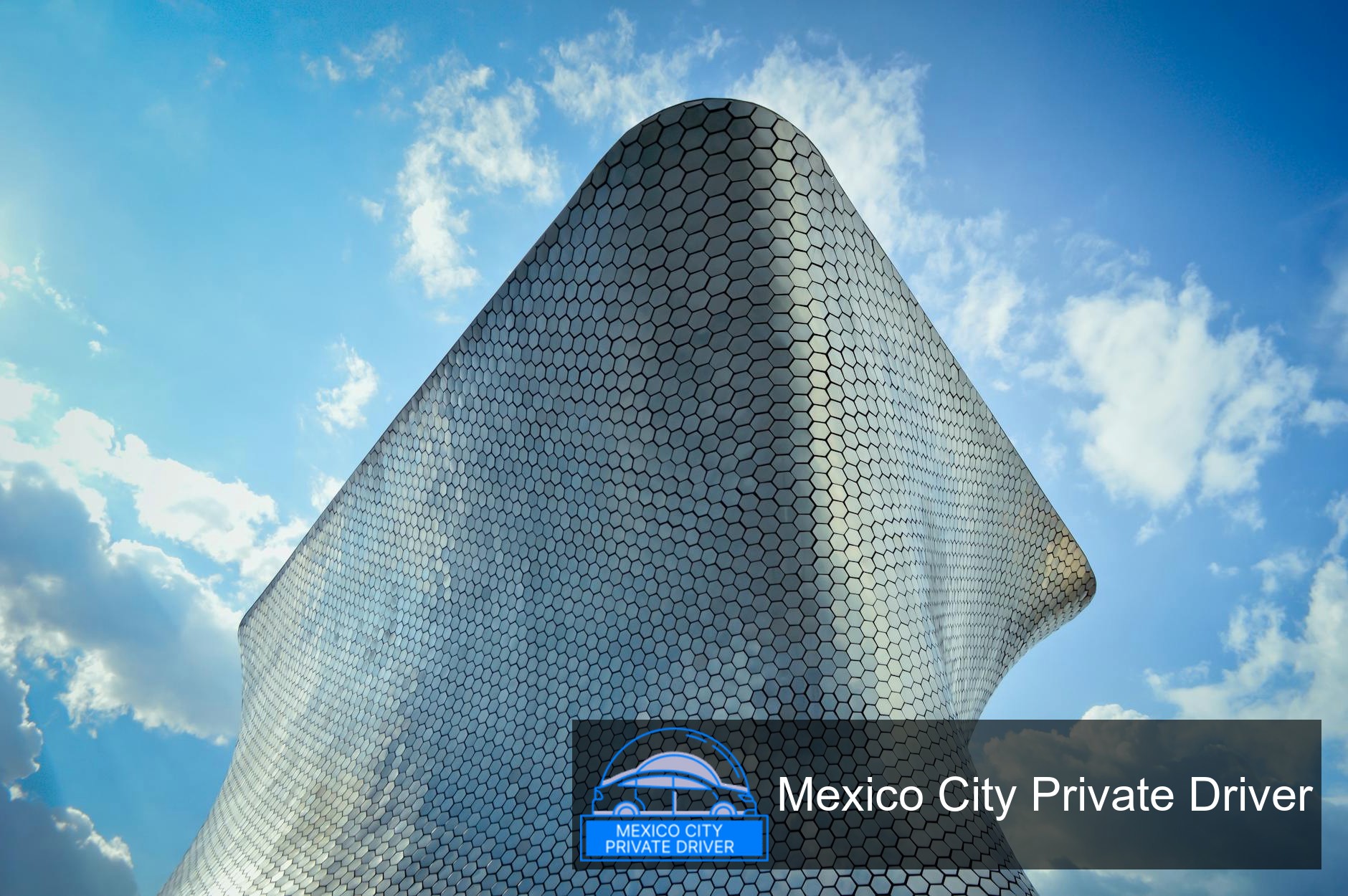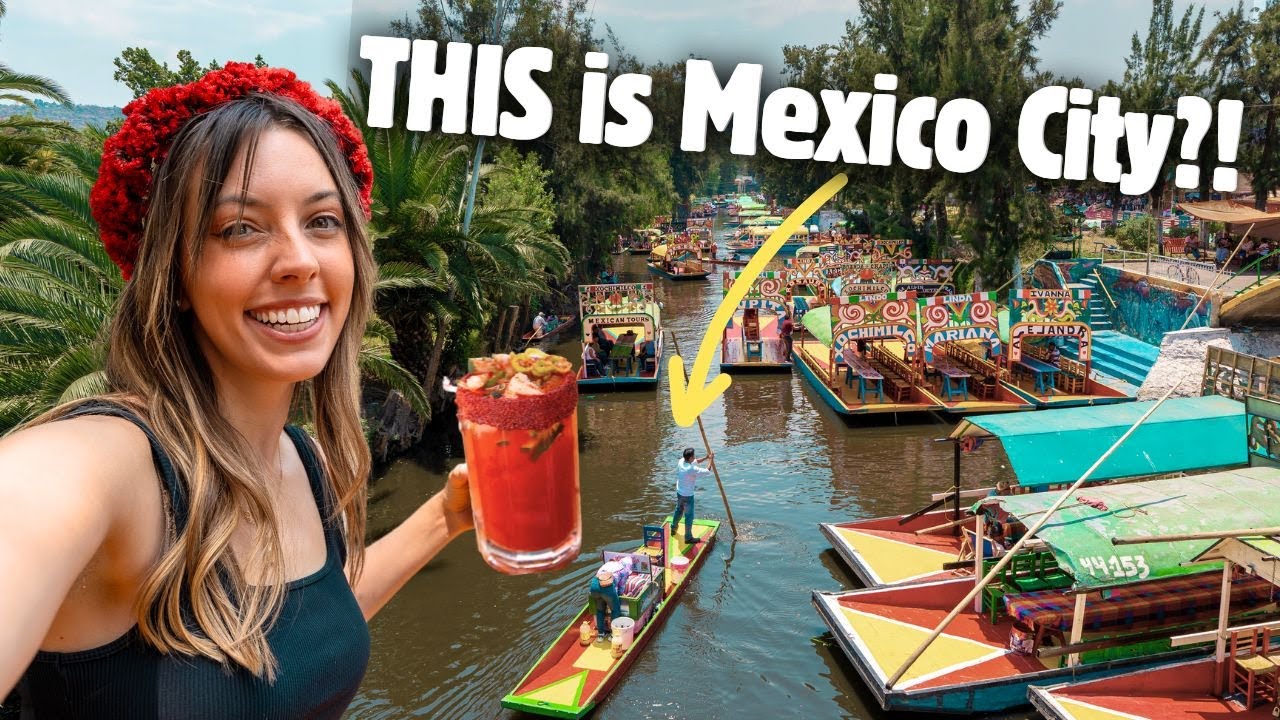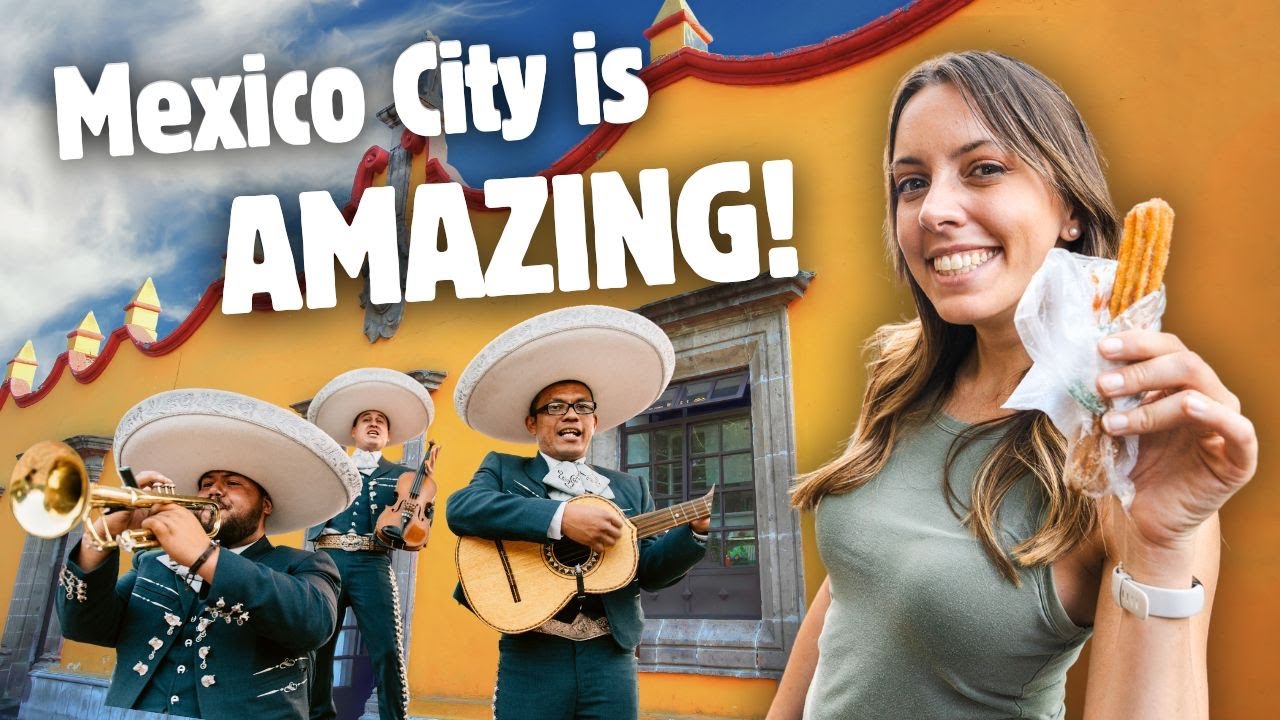TL;DR Museo Soumaya Plaza Loreto is the original Soumaya museum (opened 1994) housed inside a beautifully restored 16th–industrial-era complex at Plaza Loreto. It’s quieter and more intimate than the flagship Plaza Carso site, contains five main galleries plus two temporary spaces, and showcases European Old Masters, an extensive Rodin collection, Mexican art, pre-Hispanic works, and a remarkable archive of historical documents. Admission is typically free, opening hours are usually mid-morning to early evening (check the official site before you go), and I recommend 1.5–2.5 hours to see the Loreto highlights at a relaxed pace. (Sources: Museo Soumaya; Mexico City cultural site; Google Arts & Culture; local guides.)
Museo Soumaya Plaza Loreto Mexico City: A Complete Guide to Art, History, and Must-See Exhibitions
I first fell in love with Museo Soumaya Plaza Loreto not because it was the flashier sibling of the Carso building, but precisely because it felt like a discovery: a tucked-away, carefully restored part of Mexico City’s industrial and cultural history where art, archives and quiet rooms let you linger. In this guide I’ll walk you through what to expect, what not to miss, practical steps to visit, and the questions my readers ask most often. Wherever I make a claim that I couldn’t fully verify in the available extracts I’ll tell you so.
Why Plaza Loreto matters
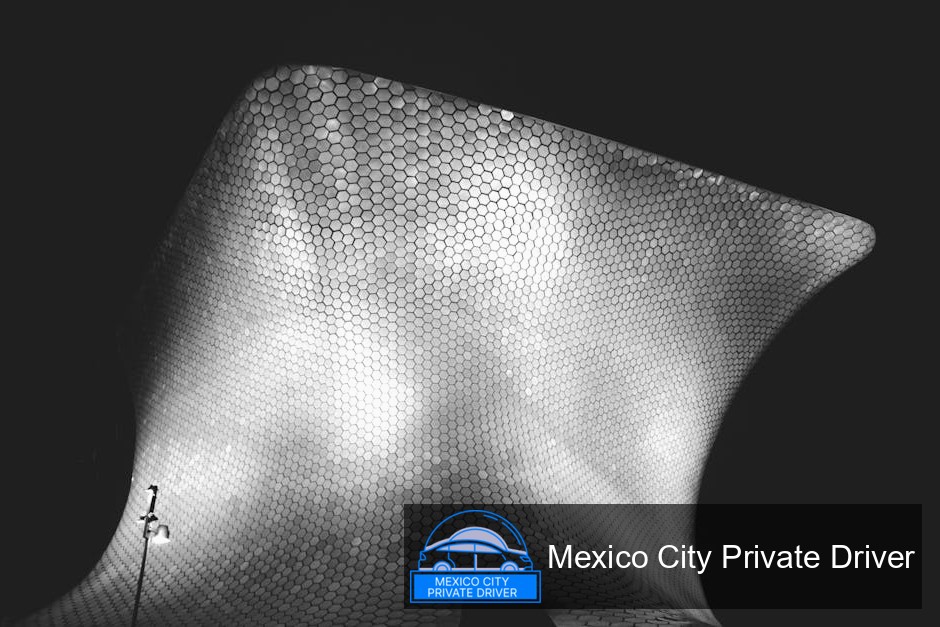
The Plaza Loreto location is the original Soumaya museum site: it opened in the 1990s and remained the main exhibition space until the now-iconic Plaza Carso opened in 2011 (Source: Mexico City government cultural pages). That history matters for two reasons.
- First, the building itself is a restoration: the museum shares the Plaza Loreto shopping complex, which was converted from an old paper factory and industrial site whose structures go back centuries. Parts of the complex trace back to early colonial and industrial-era activity along the Magdalena River (Source: Mexico City cultural site; Magical Towns).
- Second, Loreto retains an intimacy and a slightly quieter atmosphere than the larger, glossier Plaza Carso museum — which is helpful if you want to study works without large crowds (Source: Mexico City cultural commentary).
Soumaya is a private, non-profit cultural institution created by the Carlos Slim Foundation; the museum is named after Soumaya Domit, the founder’s wife. Today the foundation operates three venues in Mexico City: Plaza Loreto, Plaza Carso, and the house-museum dedicated to Guillermo Tovar de Teresa (Source: Wikipedia; Google Arts & Culture).
What you’ll see: highlights and must-see works
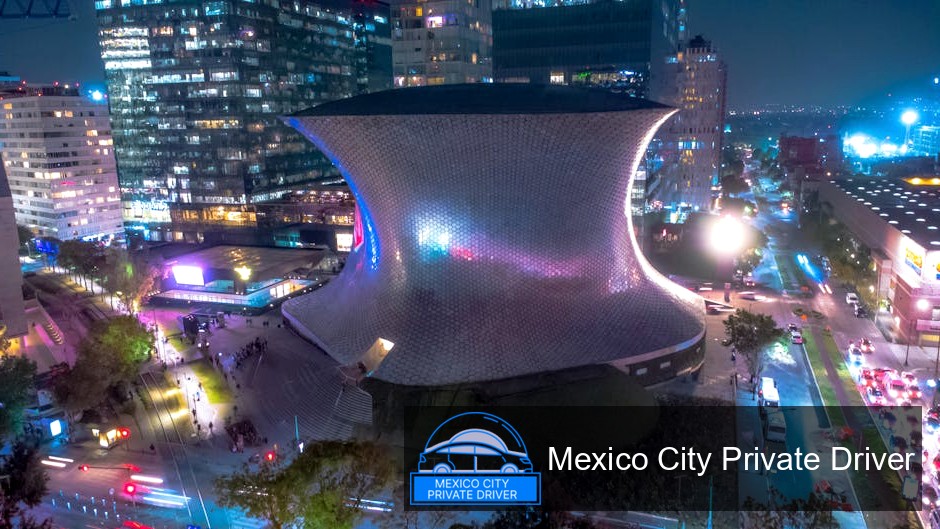
Museo Soumaya’s collection is expansive — roughly 60–70 thousand works are attributed to the foundation’s holdings in public sources — and spans about 30 centuries of art (Source: Wikipedia; Google Arts & Culture). At Plaza Loreto the emphasis is a carefully chosen cross-section rather than the monumental program at Carso.
- European Old Masters (15th–18th centuries): Flemish, Spanish, Italian, German and French schools are strongly represented. Expect paintings and small-scale works that speak to classical and Baroque periods (Source: Mexico City cultural site; Google Arts & Culture).
- Rodin and 19th–early 20th-century sculpture: the Soumaya holdings include a significant set of Rodin casts and related works — these often occupy a large-format space in the top galleries (Source: Museo Soumaya descriptions).
- Mexican modern and contemporary works: pieces and murals by major Mexican artists such as Diego Rivera and Rufino Tamayo appear in the collection, including large-format works that the museum stages in high-ceiling vestibules (Source: Museo Soumaya descriptions).
- Pre-Hispanic sculptures and decorative arts: small but important examples of Mesoamerican sculpture sit alongside gold and silver decorative objects (Source: Museo Soumaya descriptions).
- Historical documents and library collections: Hall 1 at Plaza Loreto houses the Centro de Estudios de Historia de México Carso with remarkable archival material — items like the Plan de Ayala and the Treaties of Córdoba are part of the documentation collection (Source: Magical Towns; museum materials).
If you love sculpture, Rodin is a major reason to come; if archival materials excite you, the Loreto venue’s documentary holdings are unusually strong for an art museum.
Layout and orientation: how the museum is organized
The Plaza Loreto site organizes exhibitions into five principal halls and two spaces dedicated to temporary or rotating shows (Source: Mexico City government cultural pages). Generally:
- The entrance vestibule is an asymmetric, high-ceiling space used for temporary exhibitions and large-format permanent works.
- One lower level is often devoted to decorative arts such as gold and silverwork.
- Upper levels house sculpture, Rodin-related installations, and contiguous displays of European masters.
Because works circulate between the two Soumaya venues, you might find objects currently at Loreto that are listed elsewhere in collection catalogs — the institutes coordinate displays across their buildings (Source: Mexico City cultural commentary).
Plaza Loreto vs. Plaza Carso vs. Casa Guillermo Tovar de Teresa: a quick comparison
| Venue | Opened (key date) | Atmosphere | Primary focus | Must-see |
|---|---|---|---|---|
| Plaza Loreto | 1994 (original Soumaya site) | Intimate, historic, quieter | Mixed collection, archives, temporary shows | Historic documents; scale sculptures; European masters |
| Plaza Carso | 2011 (new flagship) | Monumental, high-traffic | Broad display of major works including Rodin | Large Rodin galleries; major installations |
| Casa Guillermo Tovar de Teresa | Dedicated house museum (collection branch) | Domestic, scholarly | Curated collection of manuscripts and art | Specialized collection of Guillermo Tovar de Teresa |
My visit: timing, pacing, and practical tips I learned
When I visit Plaza Loreto I plan for 90–150 minutes. That’s enough time to take in the big sculptures, linger at the archival displays in Hall 1, and stop for a coffee without rushing. If you’re a specialist (Rodin scholar, Old Masters fan, or historian), budget more time.
Practical observations from multiple descriptions and visitor feedback:
- Visit on a weekday morning if you can; Loreto is notably quieter than Carso, but mornings reduce overlapping tour groups (Source: Mexico City cultural commentary; visitor reports).
- Allow time for the temporary exhibitions. Two galleries are reserved for rotating shows and often contain striking or thematically focused displays.
- Combine the museum visit with a walk around the Plaza Loreto complex — the restored industrial architecture and adjacent shops and cafes make for a pleasant break (Source: Magical Towns).
Practical Guide
Here are concrete steps to plan a smooth visit to Museo Soumaya Plaza Loreto — I follow this checklist before every trip.
- Check the official Museo Soumaya website for the day’s opening hours and any temporary closures. I always confirm within 24 hours of my visit because exhibition rotations or events can change access.
- Confirm admission policy. Historically the Soumaya venues have been free to the public (Source: Spanish Wikipedia entry). I still verify at the entrance or on the site because museum policies occasionally change.
- Plan transport. Plaza Loreto sits within the Plaza Loreto complex; the Soumaya institute’s main metro references point to the Polanco/San Joaquín area for the Carso venue (Source: Wikipedia). For Loreto, use a reliable map app and choose a taxi/ride-hail or local public transit route that drops you at Plaza Loreto specifically.
- Arrive 15–30 minutes before opening if you want the quietest experience and first access to popular galleries.
- At the desk, ask about audio guides, maps, and temporary-exhibit highlights. If you are researching the archival material, ask about handling policies and any required permissions (Hall 1 houses significant documents — Source: Magical Towns).
- Check photography rules at the entrance. Museum policies vary by exhibition; I always ask staff for permission and avoid flash even when photography is allowed.
- If you’re visiting both Soumaya venues, schedule separate visits (they are distinct locations). Allow travel time between them; they are not on the same campus (Source: Museo Soumaya institutional info).
Tickets, hours, and accessibility
Admissions: The Soumaya venues have traditionally offered free admission to the public (Source: Spanish-language Wikipedia and institutional summaries). That has made the museums a popular cultural resource for residents and visitors alike.
Hours: Public listings frequently show opening hours in the mid-morning to early-evening window (for example, many visitor guides list 10:30–18:30 for Soumaya venues), but hours can vary by day and season. I always check the museum’s official site or call ahead to confirm (Source: TripAdvisor listings and museum pages).
Accessibility: The Soumaya institution emphasizes public access, but specific accessibility features (ramps, lifts, tactile guides) vary by building and exhibition. When I visited I found circulation straightforward in the main public galleries, but I recommend contacting the museum in advance if you require specific accommodations — museum staff will confirm details and ensure a smooth visit.
Temporary exhibitions and how to track them
Plaza Loreto keeps two spaces for rotating displays, and the museum frequently coordinates exhibitions between Loreto and Carso, so shows can move from one venue to the other (Source: Mexico City cultural commentary; Museo Soumaya institutional notes). Two practical tips:
- Follow the museum’s official channels and Google Arts & Culture pages for curated online previews and exhibition histories (Source: Google Arts & Culture).
- If a temporary exhibition is a priority for you, call the museum to double-check dates, closure times for installation, and any ticketing requirements.
How the collection is organized (quick orientation)
Understanding the structure helps you navigate quickly. In general:
- Large-format sculptural works and occasional murals live in the vestibule and upper rooms.
- Level 1 commonly shows decorative arts like gold and silver pieces; small works and precious objects may be concentrated there (Source: Museo Soumaya descriptions).
- European Old Masters are grouped by school and period, making comparative viewing easy. The Rodin material is concentrated in dedicated galleries (Source: Museo Soumaya descriptions).
- Archival and documentary holdings (Hall 1) are curated for research and historical context — a treasure for scholars and anyone fascinated by Mexico’s independence- and revolution-era documents (Source: Magical Towns; museum notes).
Why choose Loreto over Carso — and vice versa?
My personal rule: if you want a contemplative, historically anchored experience, go to Plaza Loreto first. If you want the architectural spectacle and a dense concentration of star works (and more visitors), plan a separate trip to Plaza Carso. Curators routinely move pieces between venues, so both sites reward repeat visits (Source: Mexico City cultural pages; institutional notes).
Where to eat and nearby logistics
Plaza Loreto is a shopping and leisure complex: you’ll find cafes and small restaurants for a coffee or a light meal after your visit (Source: Magical Towns). I usually stop at a nearby café, review my notes, and then decide whether to return to a specific gallery.
FAQs
Is Museo Soumaya Plaza Loreto free?
Historically the Soumaya museums have offered free admission (Source: Spanish Wikipedia entry and institutional summaries). However, policies occasionally change, so I advise confirming on the official website or at the entrance before your visit.
How long should I spend at Plaza Loreto?
Plan 90–150 minutes for a relaxed visit that covers highlights and one temporary exhibition. If you’re a specialist or a slow reader in the archives, allocate extra time.
Where can I see Rodin works?
Rodin casts and related sculpture are prominently displayed in Soumaya rooms dedicated to 19th–20th-century sculpture; many Rodin pieces are staged on upper floors and large vestibule spaces (Source: Museo Soumaya descriptions). Check at the info desk for the current location.
Are photography and flash allowed?
Photography policies change by exhibition. In many museums non-flash photography is permitted, while flash and tripods are restricted. I always confirm with staff upon arrival — the museum will tell you the current rules for each gallery.
Is Plaza Loreto accessible for wheelchairs?
Soumaya venues aim to be publicly accessible, but accessibility features vary by building and exhibit. If you need guaranteed access (lift, ramp, or assistance), contact the museum ahead of time so staff can confirm and prepare for your visit.
Can I visit both Soumaya venues on the same day?
Yes, but keep in mind Plaza Loreto and Plaza Carso are separate locations. If you plan to visit both, allow sufficient travel time between them and check each venue’s hours to avoid missing galleries or temporary shows (Source: institutional info).
Does Plaza Loreto have archival documents on display?
Yes. Hall 1 hosts the Centro de Estudios de Historia de México Carso and exhibits historic documents, including notable pieces such as the Plan de Ayala and the Treaties of Córdoba among other key documents (Source: Magical Towns; museum descriptions).
Final thoughts — why I recommend Museo Soumaya Plaza Loreto
Visiting Plaza Loreto feels less like checking off a “must-see” and more like spending time in a carefully assembled private collection that respects both aesthetic display and historical context. If you appreciate a quieter, historically layered museum visit — with strong sculptural holdings, European Old Masters, and a remarkable documentary center — Loreto is a special place to linger. Always check the museum’s official communications for current hours, temporary exhibitions, and any access updates; while I rely on reputable extracts and my own visits for these recommendations, details shift and verification ensures the best experience.
I hope this guide helps you plan a thoughtful visit. If you want, I can draft a one-day Polanco/Loreto museum itinerary or check the current temporary shows for the dates you plan to travel — tell me your travel dates and I’ll pull the latest info.
Martin Weidemann is a digital transformation expert and entrepreneur with over 20 years of experience leading fintech and innovation projects. As a LinkedIn Top Voice in Digital Transformation and contributor to outlets like Forbes, he now brings that same expertise to travel and mobility in Mexico City through Mexico-City-Private-Driver.com. His focus: trustworthy service, local insights, and peace of mind for travelers.

